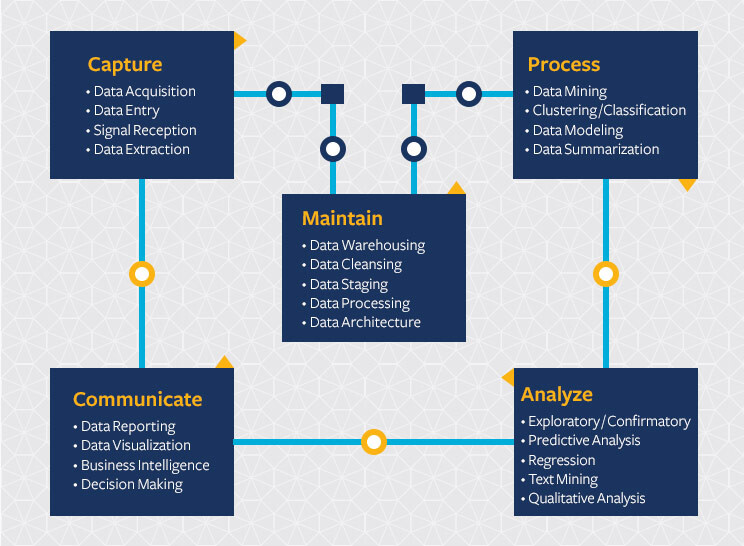Data science continues to evolve as one of the most promising and in-demand career paths for skilled professionals. Today, successful data professionals understand that they must advance past the traditional skills of analyzing large amounts of data, data mining, and programming skills. In order to uncover useful intelligence for their organizations, data scientists must master the full spectrum of the data science life cycle and possess a level of flexibility and understanding to maximize returns at each phase of the process.
The Data Science Life Cycle
The term “data scientist” was coined as recently as 2008 when companies realized the need for data professionals who are skilled in organizing and analyzing massive amounts of data.1 In a 2009 McKinsey&Company article, Hal Varian, Google’s chief economist and UC Berkeley professor of information sciences, business, and economics, predicted the importance of adapting to technology’s influence and reconfiguration of different industries.
Effective data scientists are able to identify relevant questions, collect data from a multitude of different data sources, organize the information, translate results into solutions, and communicate their findings in a way that positively affects business decisions. These skills are required in almost all industries, causing skilled data scientists to be increasingly valuable to companies.
“The ability to take data — to be able to understand it, to process it, to extract value from it, to visualize it, to communicate it — that’s going to be a hugely important skill in the next decades.”
– Hal Varian, chief economist at Google and UC Berkeley professor of information sciences, business, and economics
